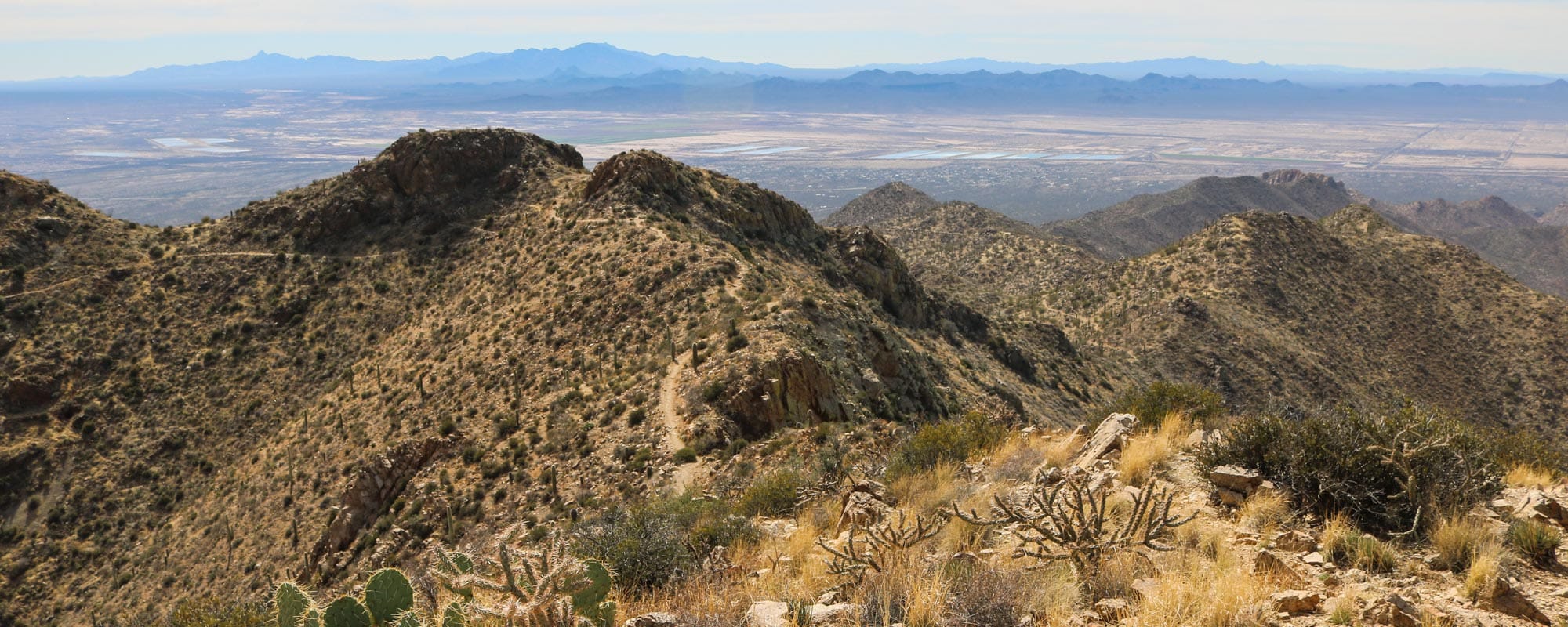Created primarily to protect a single plant species, Saguaro National Park is home to huge forests of tree-like saguaro cacti, America’s tallest and most iconic cactus species.
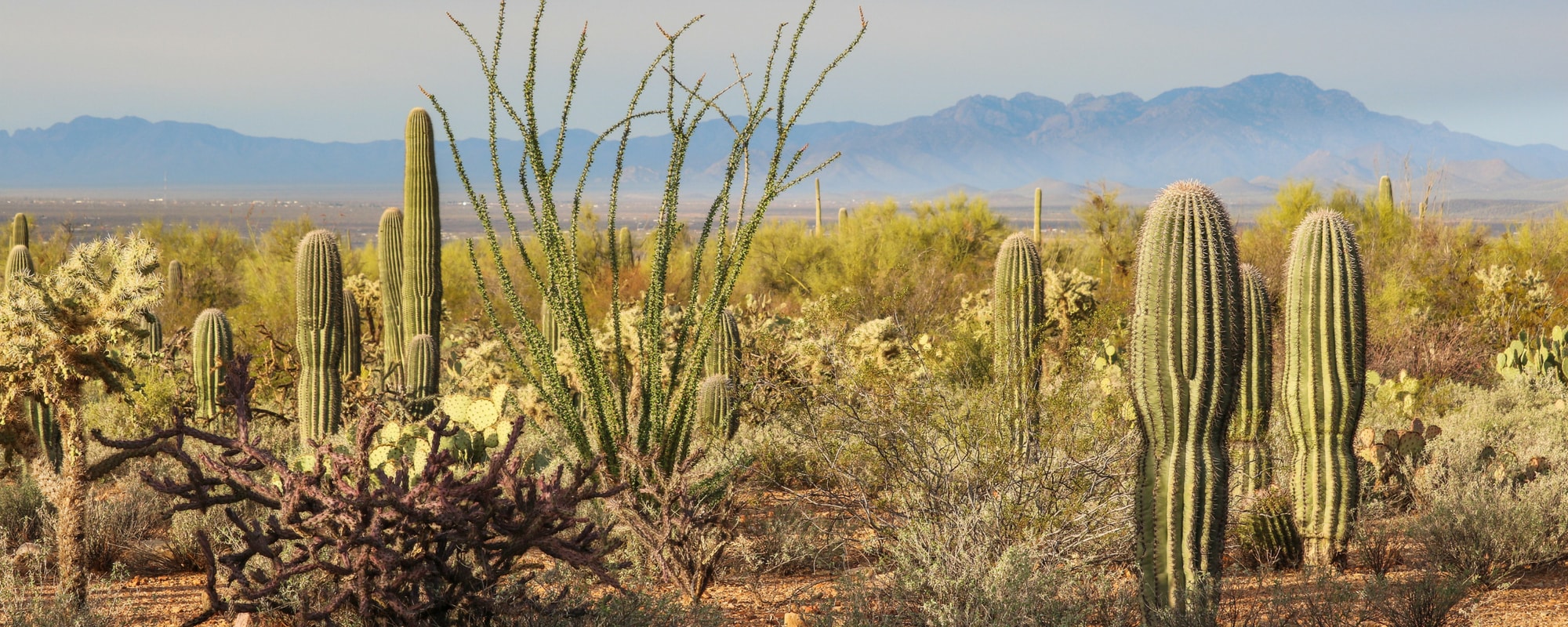
The very symbols of the American Wild West, huge numbers of saguaros dot the Sonoran Desert in southern Arizona.
These tall, branching cacti, reaching heights of more than 40 feet (12 meters), dominate and characterize the region. Near the ever-expanding urban sprawl of Tucson, this unique landscape, and its flora and fauna, is protected in Saguaro National Park.
When it was established in 1933 as Saguaro National Monument, it was the very first federally protected area that was created to protect a specific plant species. Its status was changed to national park in 1994.
The reason for the creation of a park specifically for one plant is that the saguaro (pronounced “sa-WAH-ro”) cactus’ habitat is contained within the Sonoran Desert.
It takes between 50 and 80 years for a saguaro to grow 10 feet (3 meters) tall, making them a precious and vulnerable species. In other words, if a tall saguaro dies or is cut down, it takes more than a century for it to be replaced by one of similar majesty.
In addition to vast number of saguaros, the park also features Native American rock art, a 19th-century homestead and is home to a surprisingly variety of wildlife, including roadrunners, coyotes, gila monsters, snakes and javelina (also known as collared peccary, a wild boar-like omnivore).
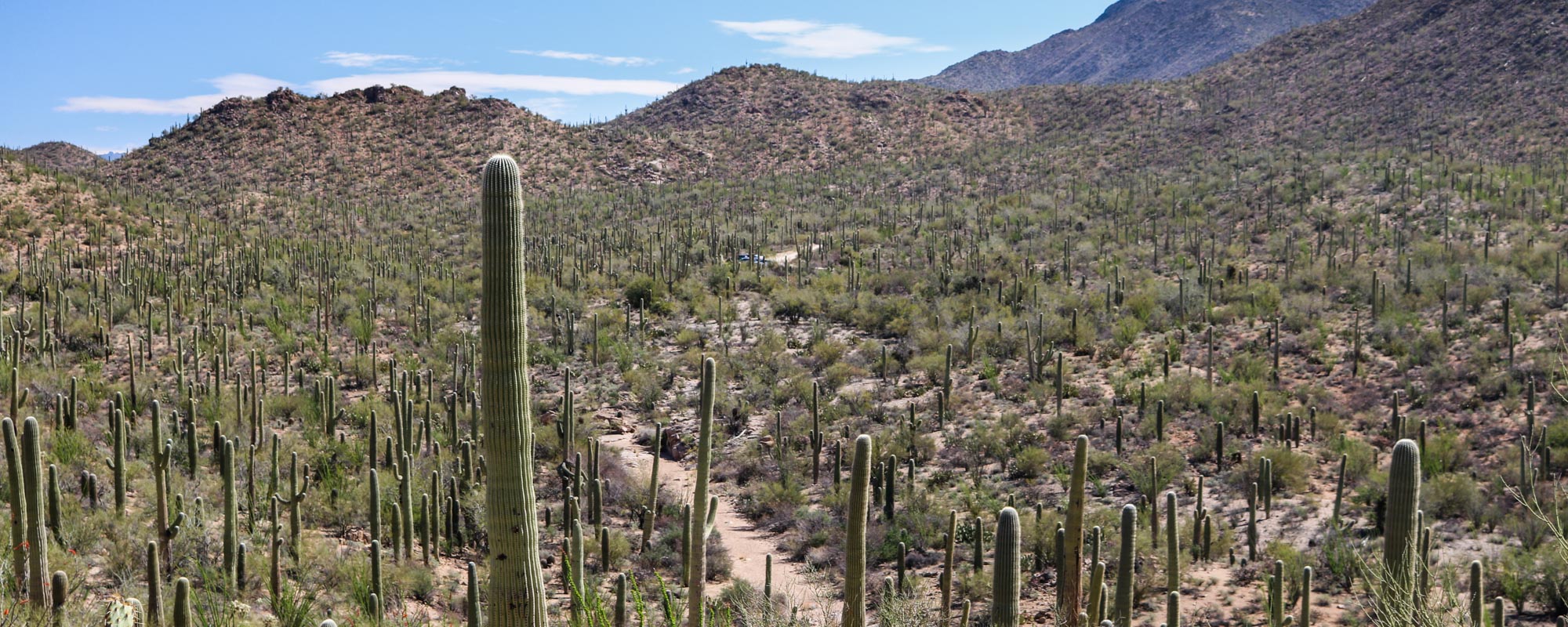
This Saguaro National Park information page contains affiliate links. You can read more about our Terms of Use / Disclosure here.
Highlights of Saguaro National Park
The park consists of two separate districts—the Tucson Mountain District (TMD) west of Tucson and the Rincon Mountain District (RMD) to the east.
The two areas are distinctly different, the TMD home to desert plains and arid mountain ranges, while conifer forests and wilderness characterize the higher elevations of the RMD. Yet, both have more than their fair share of saguaros.
Tucson Mountain District
- Red Hills Visitor Center
- Bajada Loop Drive
- King Canyon Trail to Wasson Peak
- Signal Hill Petroglyphs
- Arizona-Sonora Desert Museum (just south of the park’s boundary)
- Gates Pass Overlook (scenic mountain pass on the way to/from Tucson)
Rincon Mountain District
- Rincon Visitor Center
- Cactus Forest Loop Drive
- Mica View and Loma Verde Trails
- Tanque Verde Ridge
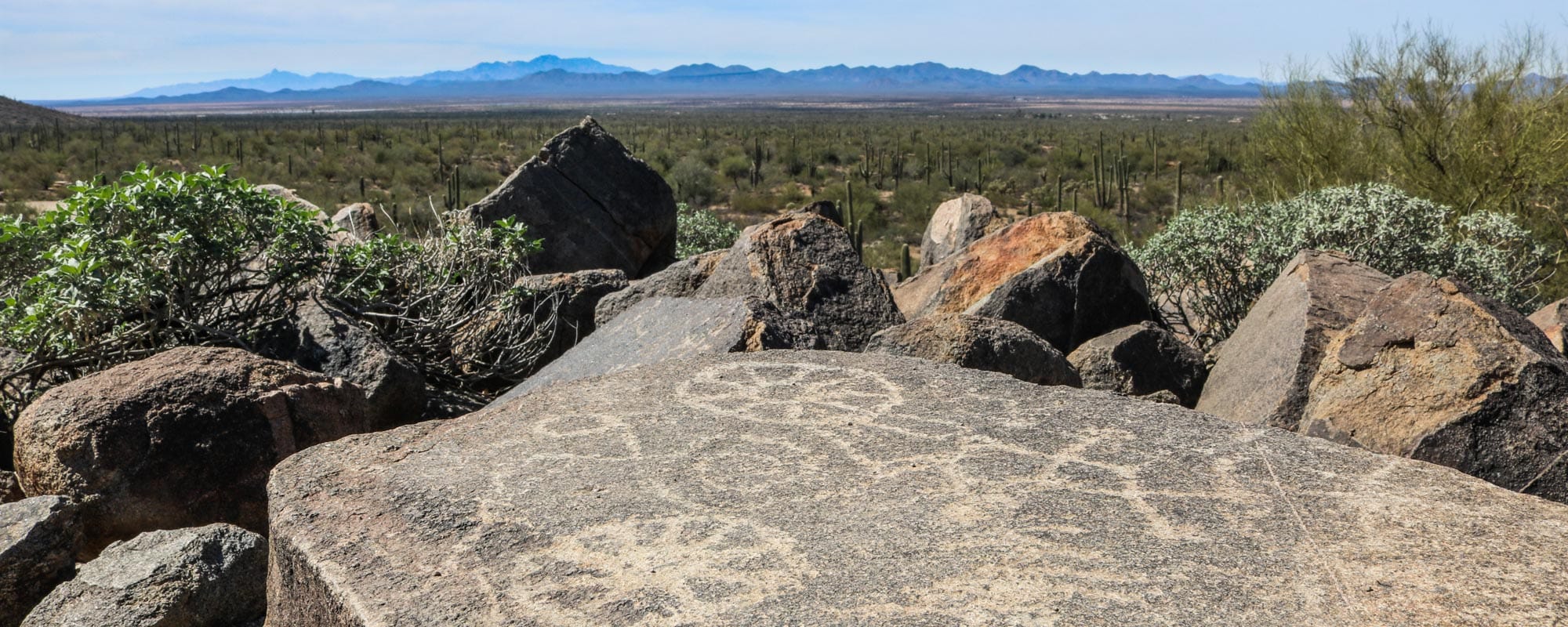
Accommodation Near Saguaro National Park
To properly explore Saguaro National Park, you need two days minimum, at least one full day in each district. Just because it lies on both sides of Tucson, it’s amazingly accessible and every possible tourist facility is readily available.
Besides backcountry campsites, there is no official accommodation in Saguaro National Park.
However, if you do want to camp and enjoy some facilities, consider parking your RV or pitching your tent at the awesome Gilbert Ray Campground, a short drive south of the Red Hills Visitor Center in the Tucson Mountain District. Staying there, you’ll be surrounded by saguaros—I can’t imagine a better place to stay.
For more luxury, Tucson has all kinds of hotels and motels. Located between both districts, the city is a great base to explore Saguaro National Park.
Booking.com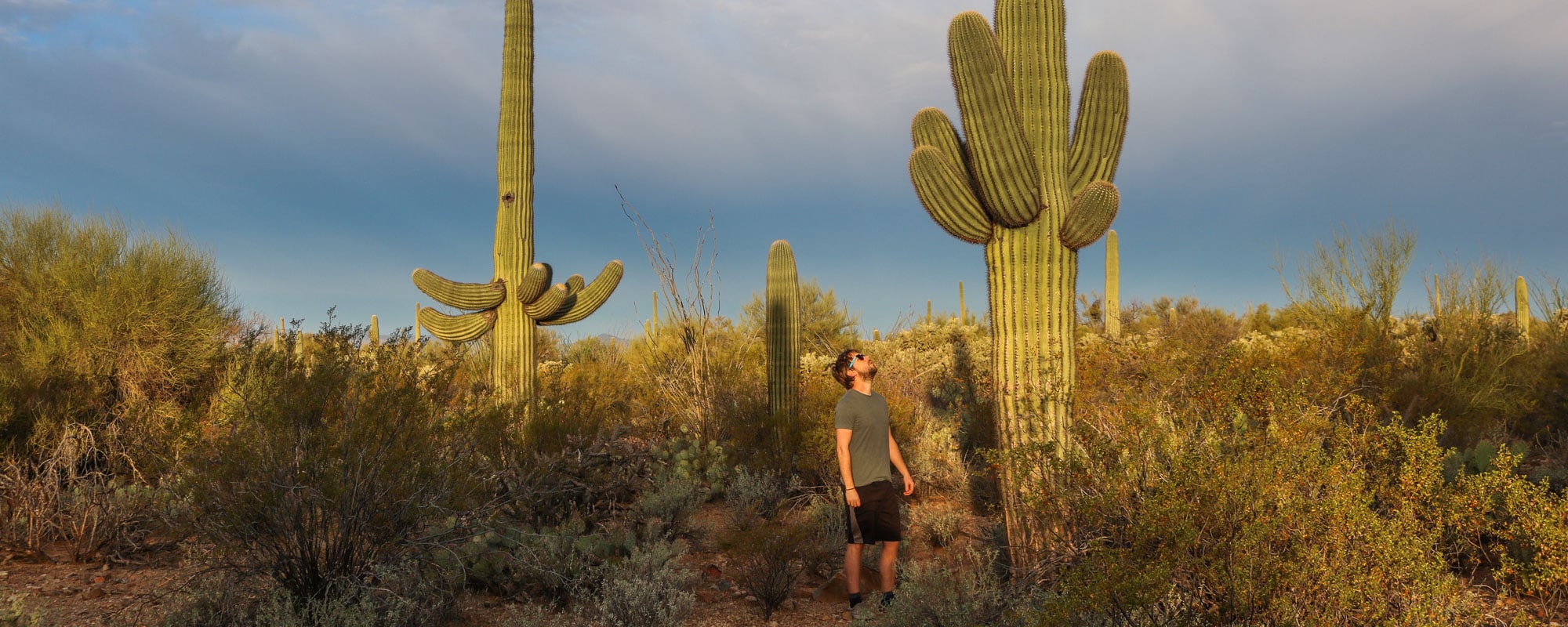
Useful Info
Location: Southern Arizona
Nearest Town: Tucson
Area: 143 square miles (91,327 acres)
Annual Visitors (2022): 908,194
Features: Sonoran Desert landscapes, wildlife, Tucson and Rincon Mountains, saguaro forests
Top Attractions: Bajada Loop Drive, Cactus Forest Loop Drive, Native American petroglyphs, Arizona-Sonora Desert Museum, saguaros
Popular Activities: Hiking, cycling, camping, wildlife watching, horseback riding
Suggested Stay: 2-3 days
More Information: National Park Service
Nearby National Parks:
- Grand Canyon National Park, Arizona
- Petrified Forest National Park, Arizona
- Joshua Tree National Park, California
